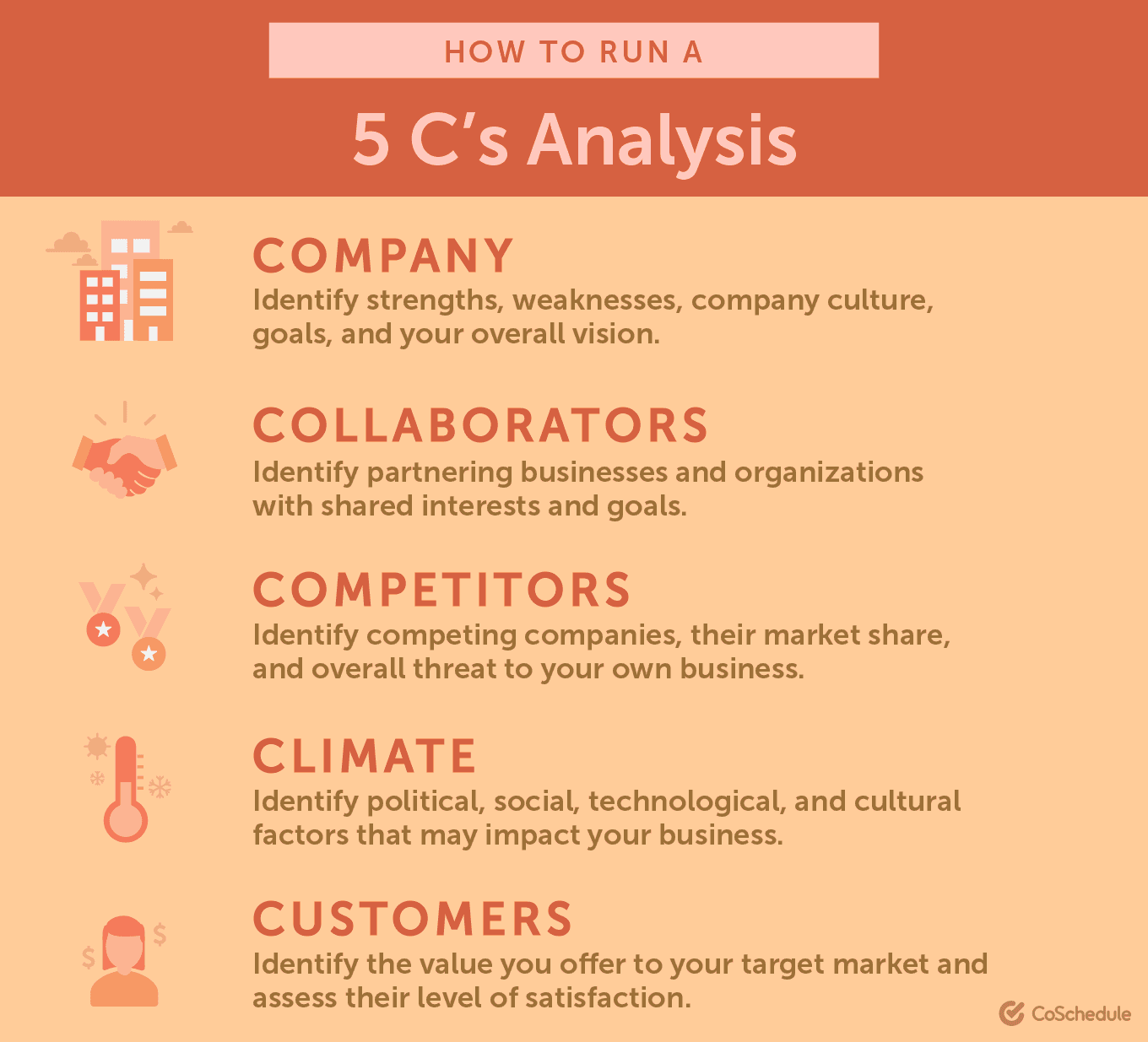In the simplest form, your marketing process is a carefully constructed plan to identify customer problems, analyze market opportunities, and create marketing materials to reach your target audience. Implement a marketing process that provides your team with clear direction and tools to succeed.
A marketing process is a strategic journey that businesses undertake to successfully connect their products or services with their target audience. It involves stages like market research, target market identification, development of the marketing mix, marketing strategy formation, and implementation of the marketing plan. This process is crucial as it helps businesses understand their customers’ needs, reach the right audience, and ultimately drive sales and growth.
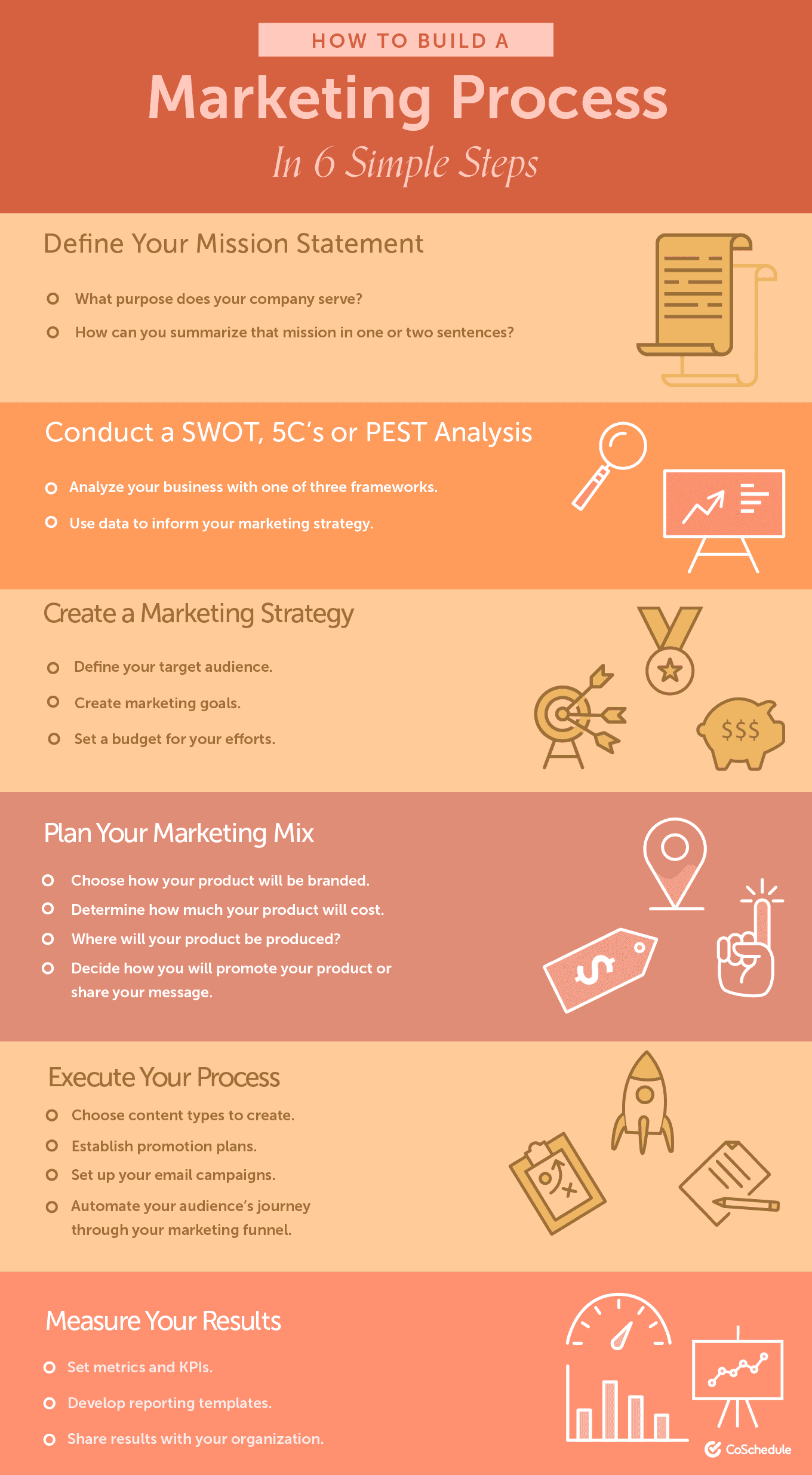
Step 1: Define Your Mission Statement
A mission statement is a concise and powerful declaration of an organization’s purpose. It outlines what the organization does, who it serves, and how those things are accomplished. A great mission statement guides decision-making, motivates employees, and communicates to customers what they can expect from the organization.
So, how do you craft a compelling mission statement? Here’s a simplified formula:
Purpose
Start with why your organization exists. What problem are you trying to solve or what change do you want to make in the world?
Business
Next, describe what your organization does. What products or services do you offer to achieve your purpose?
Values
Finally, express the values that guide your organization. What principles or beliefs drive your actions?
Remember, a mission statement should be clear, concise, and inspiring. It should resonate with both your team and your customers, and aim to reassure your audience that you are the right choice for them.
Step 2: Conduct A SWOT, 5C’s Or PEST Analysis
The next step in creating your marketing process is running an analysis for your marketers. You have three options to choose from:
- A SWOT analysis. These analyses run through the internal and external strengths, weaknesses, opportunities and threats that your organization faces.
- The 5C’s analysis. The 5C’s analysis focuses on the company, collaborators, customers, competitors, and climate of your marketing.
- A PEST Analysis. The PEST analysis focuses on more environmental factors like politics, the environment, social climate, and technology.
Conducting A SWOT Analysis
A SWOT analysis is a relatively straightforward process. As a team, you will need to identify the internal strengths and weaknesses of your organization.
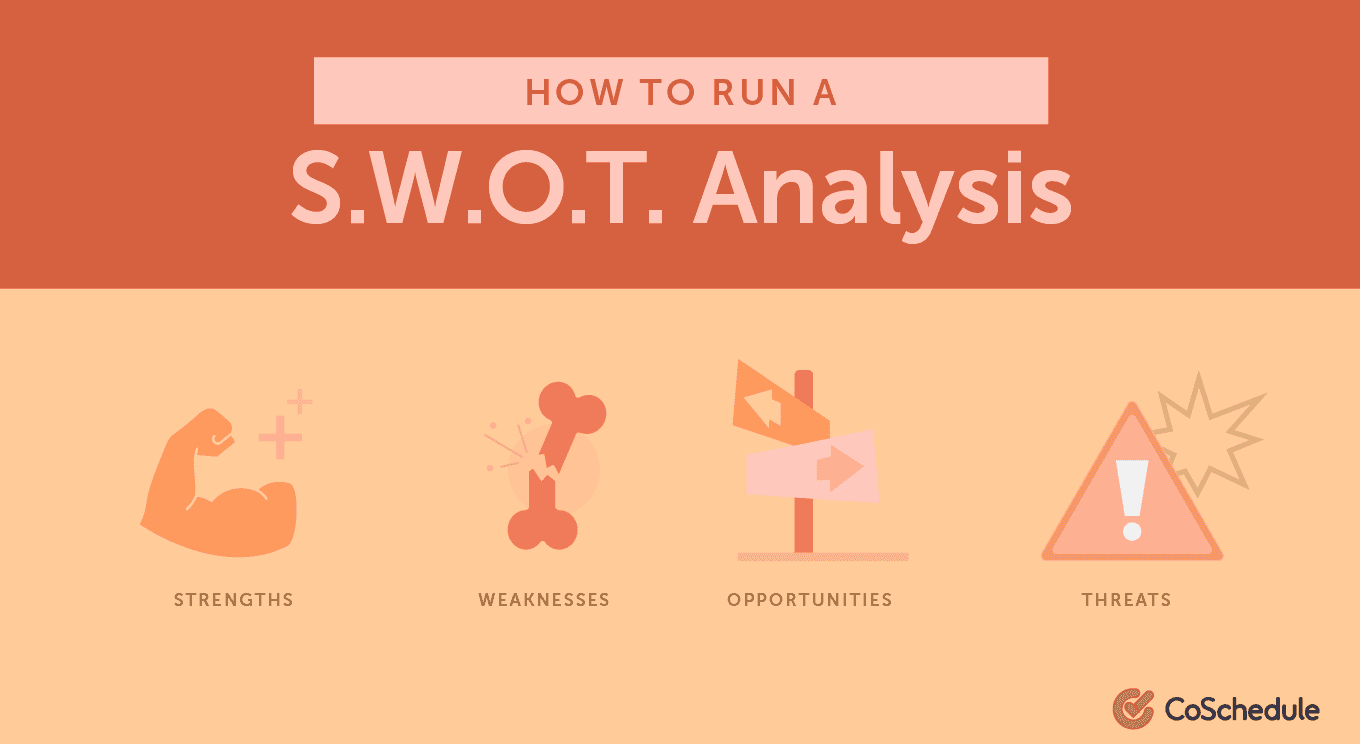
- Strengths: To find strengths, ask what your organization excels at and what unique processes aid efficiency.
- Weaknesses: Identify weaknesses by pinpointing areas for improvement and roadblocks.
- Opportunities: External opportunities can be discovered by evaluating how current marketing aligns with your mission and goals, and identifying potential benefits from market dynamics or industry changes.
- Threats: Assess threats by looking at competitor advantages, industry changes, and socio-political factors that could affect your marketing. Use the analysis template, if desired, for a structured approach.
How To Run A 5C’s Analysis
Another analysis that your marketing team can choose to run is a 5C’s analysis. Evaluate each of these parts of your company and goals.
- Company: Identify strengths, weaknesses, company culture, goals, and your overall vision.
- Collaborators: Identify partnering businesses and organizations with shared interests and goals.
- Competitors: Identify competing companies, their market share, and overall threat to your own business.
- Climate: Identify political, social, technological, and cultural factors that may impact your business.
- Customers: Identify the value you offer to your target market and assess their level of satisfaction.
Running A PEST Analysis
A PEST analysis involves looking at the political, economic, social, and technological factors that may affect your organization.
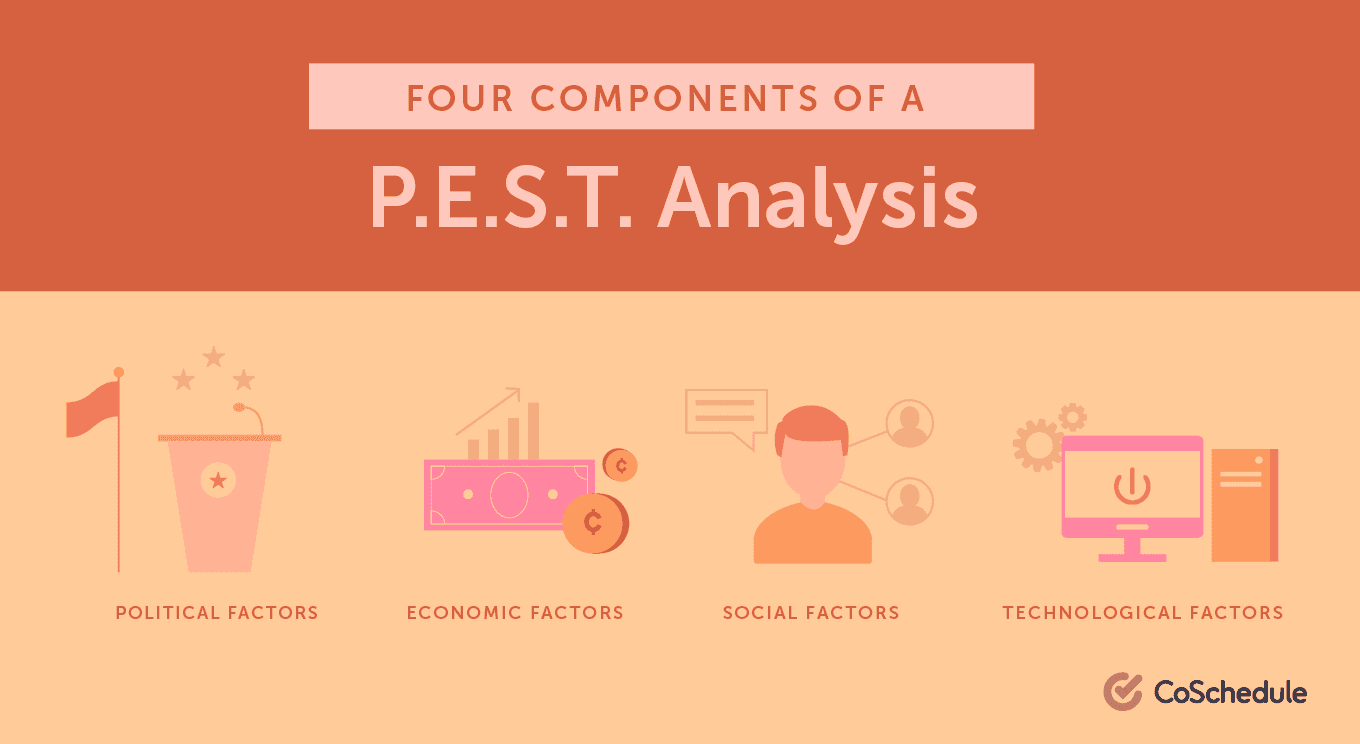
- Political Factors: For politics, consider potential election outcomes or legislation changes that could impact your business.
- Economic Factors: Economically, assess the current economic outlook, exchange rates, and your target audience’s spending habits.
- Social Factors: From a social aspect, consider relevant social movements, generational attitudes towards your product, and any potential social missteps.
- Technological Factors: Lastly, technologically, evaluate new tools that could enhance productivity, tech advancements in your industry, and the potential speed of technology adoption.
Step 3: Create A Marketing Strategy
Now that you have a full analysis of your organization and your industry, you can begin to shape your marketing strategy.
Define Your Target Audience
To start creating your strategy, you need to define who your target audience is.
- Who is already a part of our existing audience?
- Who responds best to our efforts?
- Why do people use our product or service?
- What type of problem do they experience?
Create Marketing Goals
The next step in formatting your marketing strategy is to develop a series of marketing goals that connect back to the business goals that were mentioned earlier. Your marketing goals should be S.M.A.R.T. This means they should be:
- Specific. You should know exactly what you’d like to accomplish.
- Measureable. If you can’t measure it, it’s not useful.
- Attainable. Stretch yourself, but avoid setting yourself up for failure.
- Relevant. Your marketing goals should be connected to clear business outcomes.
- Time-based. Give yourself a deadline by which you’ll achieve your goal.
Set A Budget
The last step in your marketing strategy is setting up your budget. Your budget will determine what resources and strategies you use throughout the year. There are four ways you can set a budget for the year:
- Percent of Revenue. This is where the revenue that your organization brings in determines what your budget will be.
- Top-Down. This is where your CMO or boss decides what your marketing team will spend.
- Competition Matching. This type of budget is based on trying to reverse engineer what your competitors are doing.
- Goal Driven. This type of budget is based on the goals that you have set for the year. The amount you spend on each project will depend on the kind of goal you need to reach.
Step 4: Build Your Marketing Mix
The next step in your marketing process is going to be building your marketing mix. The marketing mix, often referred to as the 4Ps, is a framework that businesses use to plan and execute their marketing strategies. The 4Ps stand for Product, Price, Place, and Promotion all work together to create a well-rounded functioning marketing mix.
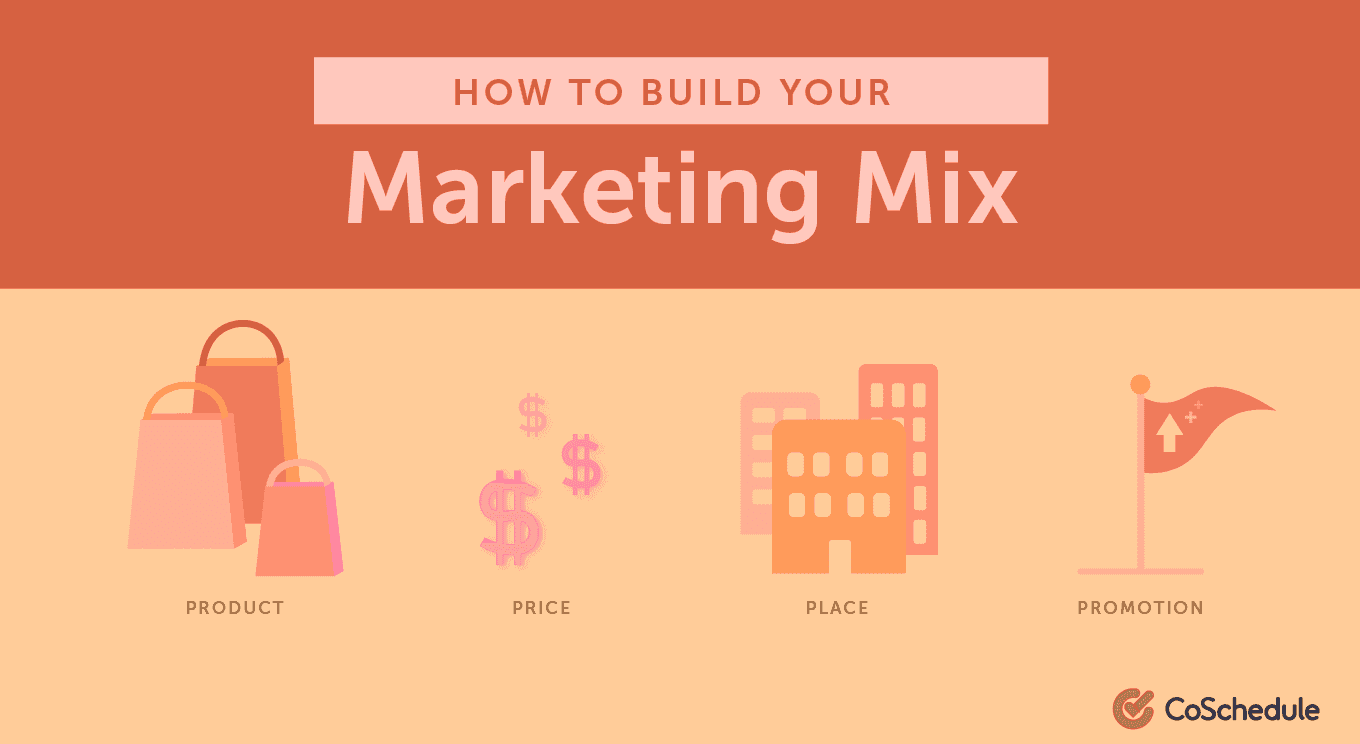
Product
Product refers to what a company is selling, be it a physical good, a digital product, or a service. For example, a tech company’s product could be a smartphone or software.
Price
This refers to how much a company charges for its product. Factors such as production cost, competitor pricing, and perceived value influence the price. For instance, a luxury fashion brand may charge a high price due to the high quality and prestige associated with their products.
Place
This refers to where and how a company sells its product, which could be a physical store, online platform, or through third-party retailers. For example, a food delivery service’s ‘place’ would be its app or website.
Recommended Reading: Mastering Mobile Marketing
Promotion
This involves the strategies a company uses to make customers aware of their product, such as advertising, public relations, content marketing, and social media marketing. For instance, a new restaurant might use social media ads and influencer partnerships for promotion.
Step 5: Execute Your Marketing Process
The next part of your marketing process is determining how to use it when you execute your projects. Here is how each part of your marketing execution can be used.
Target Marketing Process
Target marketing involves segmenting your audience into smaller groups based on factors like demographics, location, lifestyle, or behavior (such as hobbies, interests, or shopping habits), and sending tailored messages to guide them further down the marketing funnel.
Content Marketing Process
Content marketing is a key part of your marketing process, involving four steps: planning your content, executing its creation, promoting it, and measuring its effectiveness.
Content Marketing Process
- Planning. What will you create?
- Publishing. How will you execute content creation?
- Promotion. How will you promote your content?
- Measurement. How will you know if your content is effective?
Product Marketing Process
How you market your product will make or break it in the eyes of your audience. After all, we’re hearing thousands of messages every single day. You need to find a way to stand out.
Determine what your product brings to the table that others don’t and begin playing to your strengths.
Inbound Marketing Process
Inbound marketing is a strategy aimed at increasing product or service awareness among your target audience by providing them with valuable information. Rather than direct promotion, it involves serving your audience with content such as online articles, videos, and emails, hoping to be their choice when they need your product. Learn how the inbound marketing process works. Eventually, your inbound marketing process should look something like this:
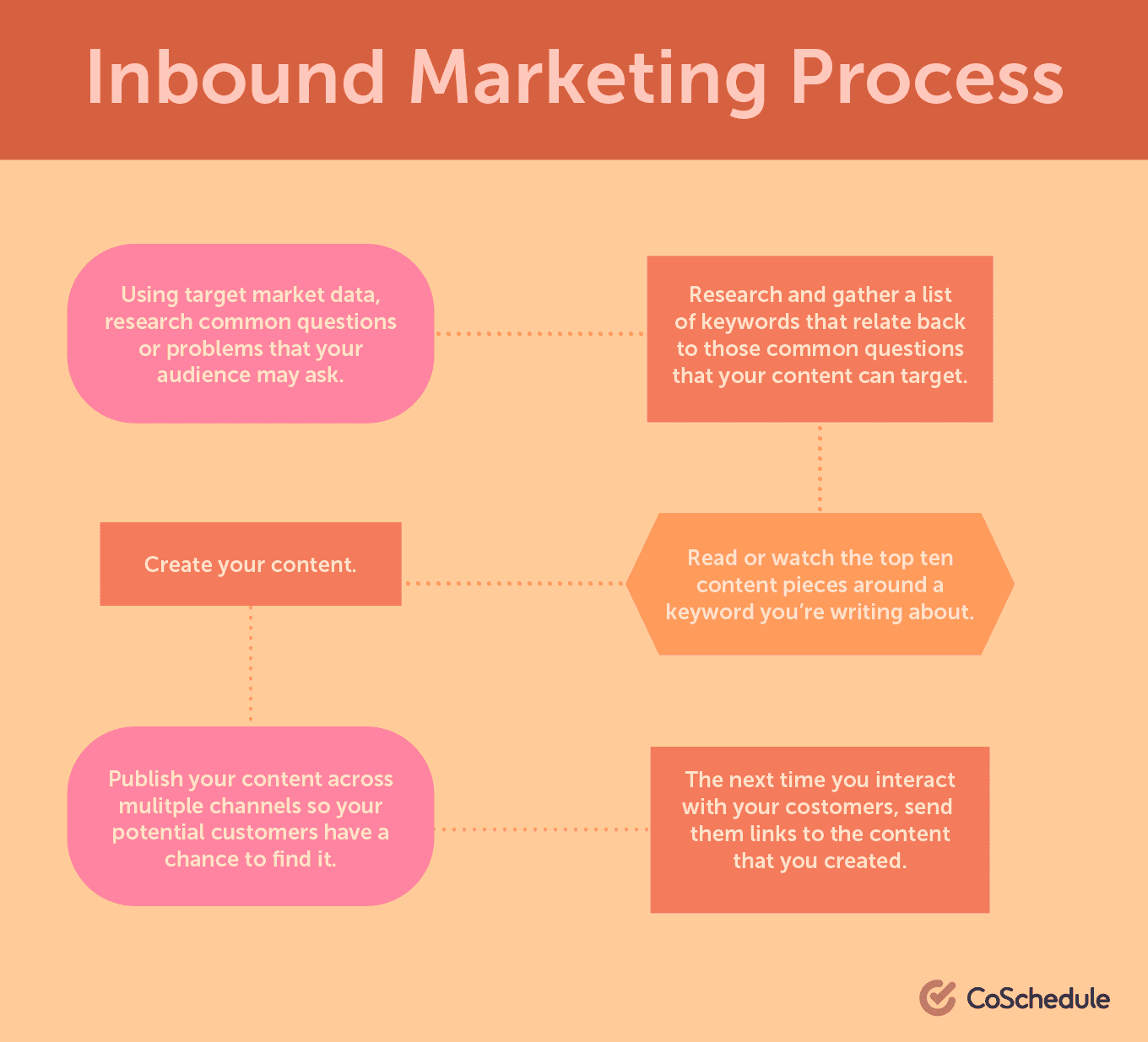
Email Marketing Process
Email marketing is a vital part of your marketing strategy. It involves ensuring your emails get read by sending them at optimal times and using them to encourage lead conversions. Once you’re ready, a developed email marketing process should look something like this:

Marketing Automation Process
Marketing automation, the final step in your execution phase, guides your audience through the marketing funnel to a purchase point using automated tools like emails, pop ups, live chats, and ad retargeting. If you’re a little hesitant about integrating marketing automation tools into your process, read this introductory post from Hubspot. Here’s an example of what a potential marketing automation process can look like:
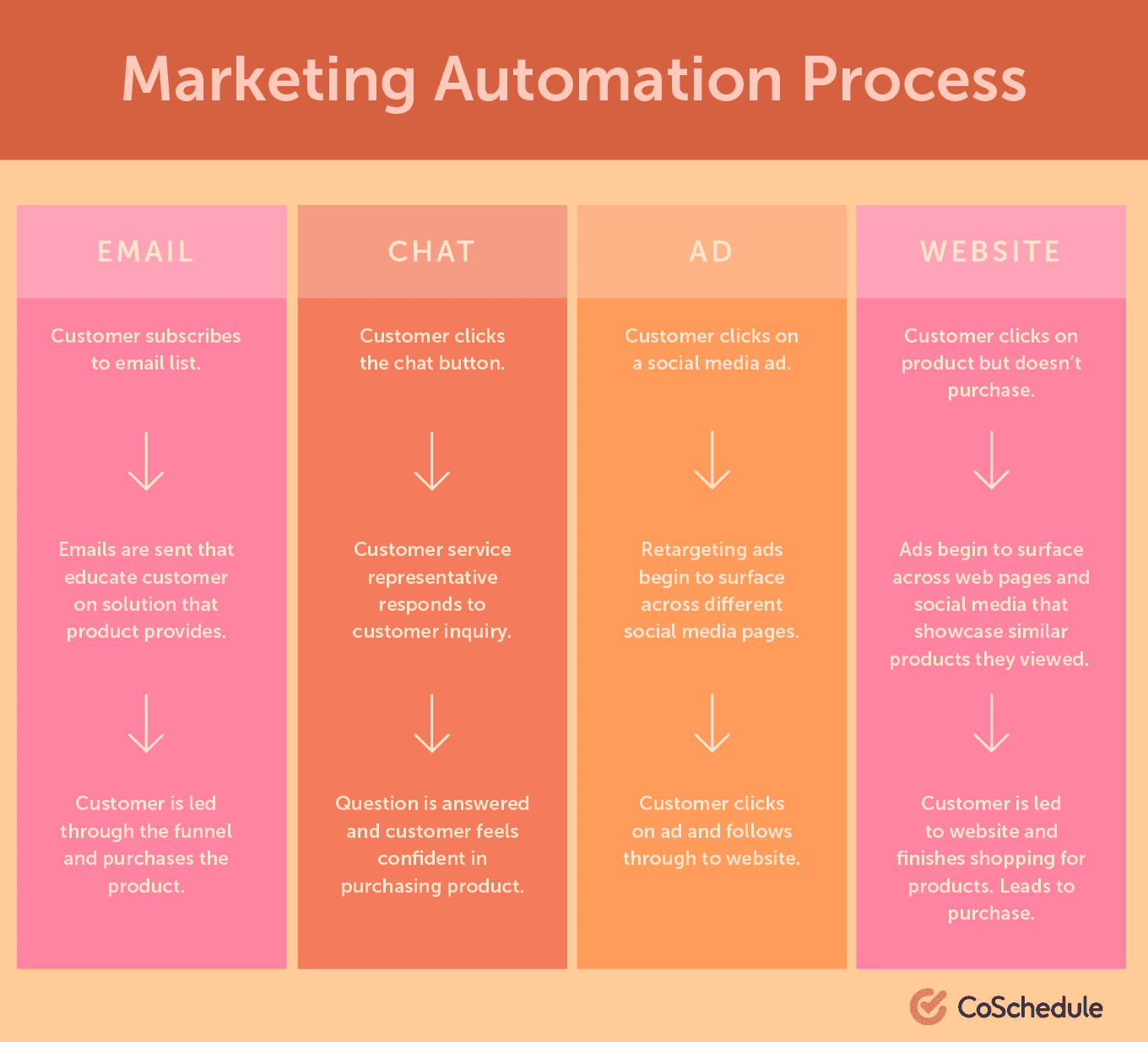
Step 6: Measure & Record Your Efforts
The last step in your marketing process is to measure and record the efforts of your marketing projects. This is the data that you will gather and show upper management to prove that your work is making a positive impact. Some possible metrics that you may want to track are:
- Social shares.
- Link clicks.
- Email opens.
- Conversions.
- Engagement rate.
CoSchedule Social Calendar offers features that allow you to easily access and share reports. Such as social engagement, campaign, and profile reports, so everyone can have complete transparency. CoSchedule also makes it easy to view analytics from published social messages and campaigns, so you can adjust and improve as needed.


